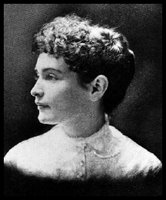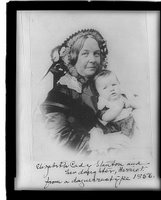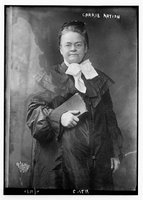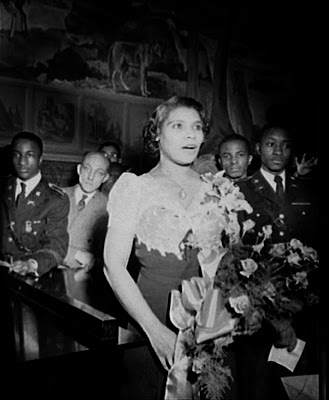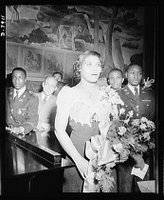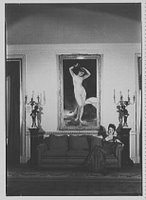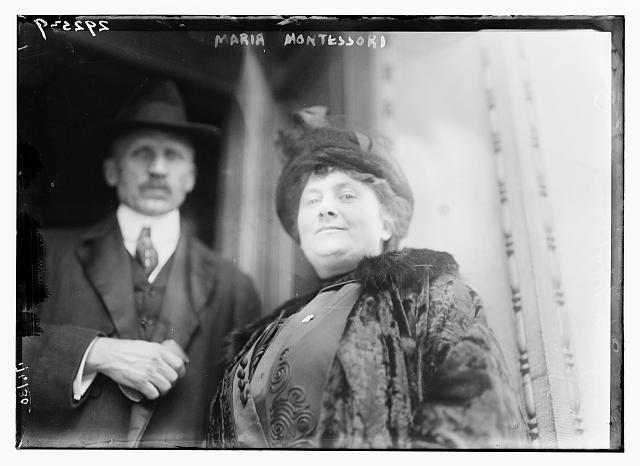Bonnie Parker and Clyde Champion Barrow. Public Domain ClipArt Stock Photos and Images.
License an Copyright Status: This website is provided by the Federal Bureau of Investigation as a public service.
Information generated by the Department of Justice is in the public domain and may be reproduced, published or otherwise used without the Department’s permission. Citation to the Department of Justice as the source of the information is appreciated, as appropriate.
All information the Bureau provides on this site that is not otherwise attributed is considered public information and may be distributed or copied, subject to Sections 701 and 709 of Title 18, United States Code, which prohibit the unauthorized use of the FBI seal or the use of the words “Federal Bureau of Investigation,” the initials “FBI,” or any colorable imitation of these words and initials “in a manner reasonably calculated to convey the impression that such [activity] . . . is approved, endorsed, or authorized by the Federal Bureau of Investigation.”
FBI History, Famous Cases, Bonnie and Clyde - Clyde Champion Barrow and his companion, Bonnie Parker, were shot to death by officers in an ambush near Sailes, Bienville Parish, Louisiana, on May 23, 1934, after one of the most colorful and spectacular manhunts the Nation had seen up to that time.
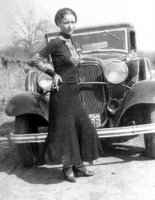
Barrow was suspected of numerous killings and was wanted for murder, robbery, and state charges of kidnaping.
The Federal Bureau of Investigation (FBI), then called the Bureau of Investigation, became interested in Barrow and his paramour late in December, 1932, through a singular bit of evidence. A Ford automobile, which had been stolen in Pawhuska, Oklahoma, was found abandoned near Jackson, Michigan in September of that year. At Pawhuska, it was learned another Ford car had been abandoned there which had been stolen in Illinois. A search of this car revealed it had been occupied by a man and a woman, indicated by abandoned articles therein. In this car was found a prescription bottle, which led Special Agents to a drug store in Nacogdoches, Texas, where investigation disclosed the woman for whom the prescription had been filled was Clyde Barrow's aunt.

Further investigation revealed that the woman who obtained the prescription had been visited recently by Clyde Barrow, Bonnie Parker, and Clyde's brother, L. C. Barrow. It also was learned that these three were driving a Ford car, identified as the one stolen in Illinois. It was further shown that L. C. Barrow had secured the empty prescription bottle from a son of the woman who had originally obtained it.
On May 20, 1933, the United States Commissioner at Dallas, Texas, issued a warrant against Clyde Barrow and Bonnie Parker, charging them with the interstate transportation, from Dallas to Oklahoma, of the automobile stolen in Illinois. The FBI then started its hunt for this elusive pair.
 | Background - Bonnie and Clyde met in Texas in January, 1930. At the time, Bonnie was 19 and married to an imprisoned murderer; Clyde was 21 and unmarried. Soon after, he was arrested for a burglary and sent to jail. He escaped, using a gun Bonnie had smuggled to him, was recaptured, and was sent back to prison. Clyde was paroled in February, 1932, rejoined Bonnie, and resumed a life of crime. |
In addition to the automobile theft charge, Bonnie and Clyde were suspects in other crimes. At the time they were killed in 1934, they were believed to have committed 13 murders and several robberies and burglaries. Barrow, for example, was suspected of murdering two police officers at Joplin, Missouri, and kidnaping a man and a woman in rural Louisiana. He released them near Waldo, Texas. Numerous sightings followed, linking this pair with bank robberies and automobile thefts. Clyde allegedly murdered a man at Hillsboro, Texas; committed robberies at Lufkin and Dallas, Texas; murdered one sheriff and wounded another at Stringtown, Oklahoma; kidnaped a deputy at Carlsbad, New Mexico; stole an automobile at Victoria, Texas; attempted to murder a deputy at Wharton, Texas; committed murder and robbery at Abilene and Sherman, Texas; committed murder at Dallas, Texas; abducted a sheriff and the chief of police at Wellington, Texas; and committed murder at Joplin and Columbia, Missouri.
The Crime Spree Begins - Later in 1932, Bonnie and Clyde began traveling with Raymond Hamilton, a young gunman. Hamilton left them several months later, and was replaced by William Daniel Jones in November, 1932.
Ivan M. "Buck" Barrow, brother of Clyde, was released from the Texas State Prison on March 23, 1933, having been granted a full pardon by the Governor. He quickly joined Clyde, bringing his wife, Blanche, so the group now numbered five persons. This gang embarked upon a series of bold robberies which made headlines across the country. They escaped capture in various encounters with the law. However, their activities made law enforcement efforts to apprehend them even more intense. During a shootout with police in Iowa on July 29, 1933, Buck Barrow was fatally wounded and Blanche was captured. Jones, who was frequently mistaken for "Pretty Boy" Floyd, was captured in November, 1933, at Houston, Texas, by the sheriff's office. Bonnie and Clyde went on together.
On November 22, 1933, a trap was set by the Dallas, Texas, sheriff and his deputies in an attempt to capture Bonnie and Clyde near Grand Prairie, Texas, but the couple escaped the officer's gunfire. They held up an attorney on the highway and took his car, which they abandoned at Miami, Oklahoma. On December 21, 1933, Bonnie and Clyde held up and robbed a citizen at Shreveport, Louisiana.
On January 16, 1934, five prisoners, including the notorious Raymond Hamilton (who was serving sentences totaling more than 200 years), were liberated from the Eastham State Prison Farm at Waldo, Texas, by Clyde Barrow, accompanied by Bonnie Parker. Two guards were shot by the escaping prisoners with automatic pistols, which had been previously concealed in a ditch by Barrow. As the prisoners ran, Barrow covered their retreat with bursts of machine-gun fire. Among the escapees was Henry Methvin of Louisiana.
The Last Months - On April 1, 1934, Bonnie and Clyde encountered two young highway patrolmen near Grapevine, Texas. Before the officers could draw their guns, they were shot. On April 6, 1934, a constable at Miami, Oklahoma, fell mortally wounded by Bonnie and Clyde, who also abducted a police chief, whom they wounded.
The FBI had jurisdiction solely on the charge of transporting a stolen automobile, although the activities of the Bureau Agents were vigorous and ceaseless. Every clue was followed. "Wanted notices" furnishing fingerprints, photograph, description, criminal record, and other data were distributed to all officers. The Agents followed the trail through many states and into various haunts of the Barrow gang, particularly Louisiana. The association with Henry Methvin and the Methvin family of Louisiana was discovered by FBI Agents and they found that Bonnie and Clyde had been driving a car stolen in New Orleans.
On April 13, 1934, an FBI Agent, through investigation in the vicinity of Ruston, Louisiana, obtained information which definitely placed Bonnie and Clyde in a remote section southwest of that community. The home of the Methvins was not far away and the Agent learned of visits there by Bonnie and Clyde. Special Agents in Texas had learned that Clyde and his companion had been traveling from Texas to Louisiana, sometimes accompanied by Henry Methvin.
The FBI and local law enforcement authorities in Louisiana and Texas concentrated on apprehending Bonnie and Clyde, whom they strongly believed to be in the area. It was learned that Bonnie and Clyde, with some of the Methvins, had staged a party at Black Lake, Louisiana, on the night of May 21, 1934, and were due to return to the area two days later.
Information generated by the Department of Justice is in the public domain and may be reproduced, published or otherwise used without the Department’s permission. Citation to the Department of Justice as the source of the information is appreciated, as appropriate.
Before dawn on May 23, 1934, a posse composed of police officers from Louisiana and Texas, including Texas Ranger Frank Hamer, concealed themselves in bushes along the highway near Sailes, Louisiana. In the early daylight, Bonnie and Clyde appeared in an automobile and when they attempted to drive away, the officers opened fire. Bonnie and Clyde were killed instantly.
Federal Bureau of Investigation: FBI History Famous Cases, Bonnie and Clyde
This World Wide Web site is provided as a public service by the Federal Bureau of Investigation. All information the Bureau provides at this site is considered public information and may be distributed or copied,
Federal Bureau of Investigation Privacy Policy
Leave a comment, make a request, Let this small sampling be a guide to better quality, more plentiful, public domain, royalty free, copyright free, high resolution, images, stock photos, jpeg, jpg, free for commercial use, clip art, clipart, clip-art. more at Public Domain Clip Art and clip art or public domain and Womens History Month or Women and Bonnie Parker or Clyde Champion Barrow and FBI or Federal Bureau of Investigation and Texas










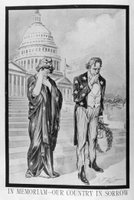


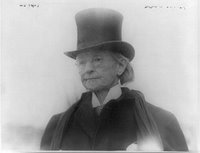



![Sophie Tucker 'The Last of the Red Hot Mamas', Credit Line: Library of Congress, Prints and Photographs Division, [REPRODUCTION NUMBER: LC-DIG-ggbain-38948]](http://photos1.blogger.com/blogger/7439/426/200/womens_history_sophie%20_tucker.0.jpg)
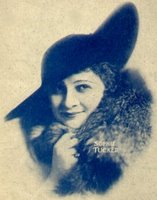

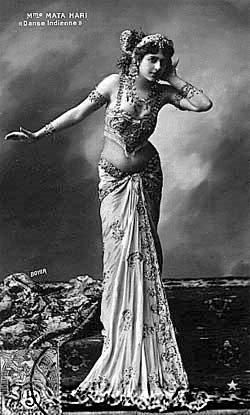


![Two women's league roller derby skaters leap over two who have fallen, Library of Congress, Prints and Photographs Division, [REPRODUCTION NUMBER: LC-USZ62-133382]](http://photos1.blogger.com/blogger/7439/426/200/womens_history_roller_derby.jpg)


